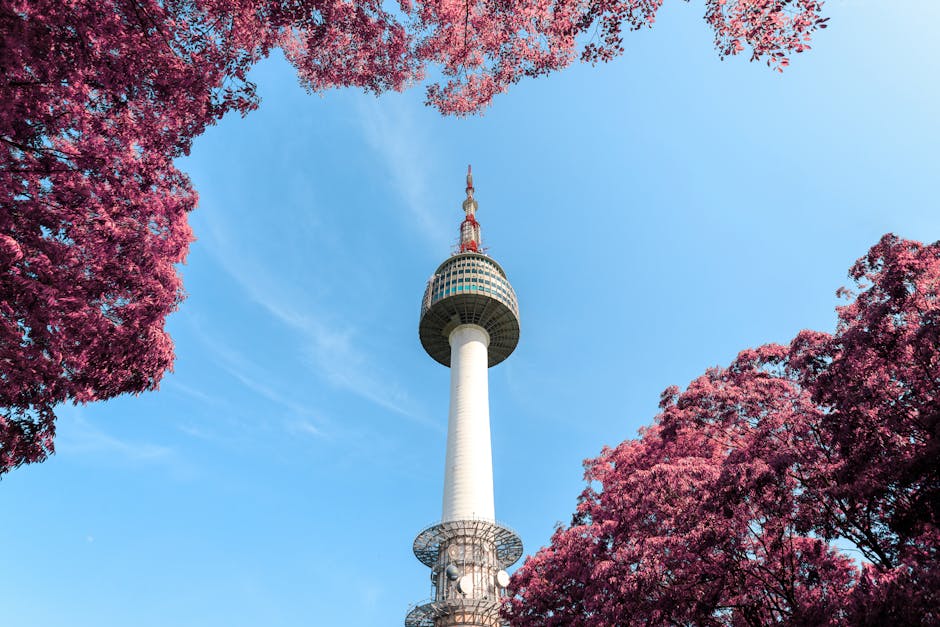
Imagine this: You’ve just landed in South Korea, the vibrant energy of Seoul already buzzing in your ears. The tantalizing aroma of street food wafts through the air, ancient palaces beckon, and neon-lit districts promise unforgettable nights. You pull out your smartphone, ready to navigate to your Airbnb or that famous kimchi jjigae spot, and confidently open Google Maps. But then… a blank screen. Or worse, a frustratingly vague direction that leads you in circles. For many travelers to South Korea, Google Maps is, to put it mildly, often "unusable."
It's a common dilemma, a digital hiccup in an otherwise hyper-connected nation. The question isn't just "Why isn't Google Maps working?" but "What are the deeper reasons behind this unexpected navigational challenge in a country renowned for its technological prowess?" As an experienced travel writer, I'm here to unpack this mystery, delving into the unique circumstances that make South Korea a peculiar outlier for the world's most popular mapping service, and equip you with the insider knowledge to navigate this incredible destination like a local.
The Invisible Barrier: South Korea's Geospatial Data Laws
The primary reason for Google Maps’ struggles in South Korea isn't a technical glitch, but rather a complex interplay of national security and geopolitical realities. South Korea, technically still at war with North Korea, maintains strict control over its geospatial data. For decades, the government has imposed regulations that limit the export of detailed mapping data outside the country's borders.
This policy is rooted in security concerns: preventing sensitive information, such as military installations or critical infrastructure, from falling into the wrong hands. Google, a global company, relies on its international servers to process and store its comprehensive mapping data. However, the South Korean government has stipulated that detailed map data must be stored on servers within Korea, and that certain sensitive areas be censored or blurred for national security purposes. Google, citing issues with data censorship and a global operating model, has so far been unable or unwilling to fully comply with these specific demands.
The result? While Google Maps can show you major roads and points of interest, it often lacks the granular detail, real-time traffic updates, accurate walking paths, and robust public transportation integration that users expect. It's like trying to read a blurry map – you get the general idea, but the crucial specifics are missing, rendering it largely "unusable" for intricate navigation in bustling cities or even serene rural areas.
A Tale of Two Maps: Local Alternatives Reign Supreme
So, if Google Maps isn't your trusty guide, what do millions of South Koreans and savvy travelers use? The answer lies in the powerhouse domestic mapping applications: Naver Maps (네이버 지도) and Kakao Maps (카카오맵). These apps are not just alternatives; they are vastly superior for navigating South Korea.
Imagine stepping out of the Seoul subway, greeted by the cacophony of vendors and the shimmer of Han River. With Naver Maps or Kakao Maps, you get:
- Pinpoint Accuracy: Whether you're trying to find a hidden alleyway café in Insadong or a specific storefront in the sprawling Gangnam district, these apps offer incredibly precise directions.
- Unrivaled Public Transport Information: South Korea's public transportation system is a marvel of efficiency. Naver and Kakao Maps provide real-time bus arrival times, detailed subway line information, optimal transfer routes, and even which subway car to board for the quickest exit. It’s an essential tool for mastering the country’s intricate network.
- Comprehensive Local Search: Looking for the nearest ATM, a traditional Korean restaurant, or a specific brand of cosmetics? These apps excel at local business listings, complete with operating hours, reviews, and even menu photos.
- Street View Excellence: Their street view features are often more up-to-date and extensive than Google's in South Korea, allowing you to visually orient yourself before you even step foot outside.
These apps are deeply integrated with local data, adhering to all government regulations, and are updated constantly. They are your true digital compass for exploring every corner of this dynamic country.
Beyond Navigation: The Cultural Nuances of Korean Travel
Understanding the mapping situation in South Korea also offers a glimpse into the country's unique cultural fabric. The "ppali-ppali" (빨리빨리) culture – meaning "hurry-hurry" or "quickly-quickly" – emphasizes speed and efficiency. Korean mapping apps are built to cater to this, providing lightning-fast, accurate information that keeps pace with the country's rapid rhythm.
While mastering a new app might seem daunting, it's part of the adventure. It encourages a deeper engagement with the local environment and technology. Furthermore, don't underestimate the power of human connection! Showing the name of your destination in Hangul (Korean script) to a local or a taxi driver often yields a helpful response, especially in areas where English might be less common. Embrace the challenge, and you'll find it enriches your travel experience, transforming a potential frustration into an opportunity for discovery.
Don't Get Lost, Get Local!
So, as you plan your unforgettable South Korean adventure, remember that while Google Maps might be an old friend, it's not the reliable guide you need here. The "unusable" experience stems from important national security considerations, rather than any lack of technological advancement. Instead, download Naver Maps or Kakao Maps before you even board your flight. Familiarize yourself with their interfaces, and you'll unlock a seamless, stress-free navigation experience, allowing you to fully immerse yourself in the vibrant culture, rich history, and breathtaking beauty of South Korea. Happy travels!
Comments
Post a Comment